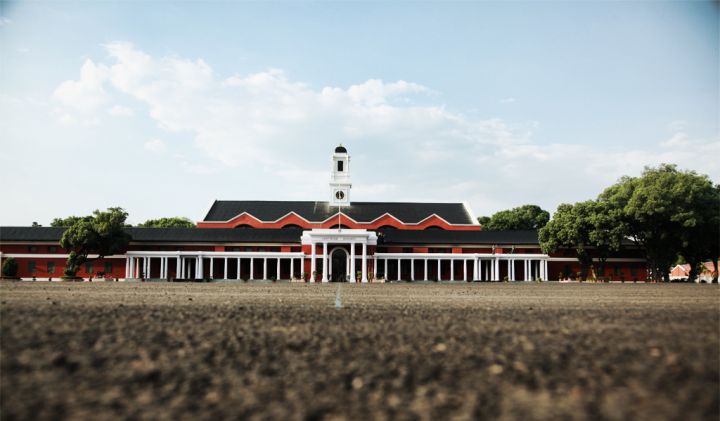




The genesis of the Territorial Army in India can be traced back to the first war of Independence in 1857, when a Volunteer Force was raised. In 1917 Indian Defence Force Act was enacted. Under the Indian Defence Force Act all the universities were asked to provide contingents to the Defence Force. Netaji Subhash Chandra Bose joined the Calcutta University Corps of Indian Defence Force in 1918. Training with the University Corps helped him later in leading the Indian National Army in the struggle for freedom. Pt Jawharlal Nehru was part of the Allahabad University Corps. As a matter of interest Mahatma Gandhi also joined the South Africa Volunteer Force in 1898 and 1905 and was a Sergeant Maj with the Indian Ambulance Corps during the Boer war and Zulu rebellion.
The Indian Defence Force consisted of two branches, viz the European Branch consisting of the Old Volunteer Force under the designation of `Auxiliary Force’ and the Indian Branch which later on become part of the Indian Territorial Force. The Territorial Force was constituted for service within the limits of Indian Frontiers.
Sir Charles Monroe, Commander-in-Chief of the Forces, in India introduced a bill in the Indian Legislative Council on 27th Aug 1920 to constitute an Indian Territorial Force which was duly passed. In the `Statement of the Objects and Reasons’ he stated that Indian Defence Force, 1917 was but an experimental measure and on account of the paucity of trained personnel and owing to the heavy demands from the Regular Force. The Indian Territorial Force was aimed at forming a second line of defence to the Regular Army.
After Independence the Territorial Army Act was passed in 1948. The Territorial Army was formally inaugurated by the first Indian Governor General Shri C Rajagopalachari on 09 October 1949. This day is celebrated as the TA Day every year, to make the countrymen conscious of existence of the ‘Citizen’s Army’ the first Territorial Army week was celebrated from 08-15 Nov 1952.
The Territorial Army in its current form came into being when the Territorial Army Act was enacted on Aug 18, 1948. The Territorial Army initially had various types of units such as Armed Regt (TA), Infantry Battalion (TA), Air Defence (TA),Med Regt (TA), Engineers Field Park Coy (TA), Signal Regiment (TA), EME Workshop (TA), Coast Battery (TA), ASC GT Coy (TA), ASC Compo Platoon (TA), AMC Field Ambulance (TA). By 1972 these units have either been disbanded or converted to Regular Army except Inf Bn (TA).
Presently the Territorial Army has a strength of approx. fifty thousand personnel comprising of 65 Departmental TA units such as Railway, IOC, ONGC, and Non Departmental TA units of Infantry Battalion (TA) including Home & Hearth Battalions, Ecological Battalion (TA) affiliated to various Infantry Regiments and Engineer Regiment (TA) for maintenance of Line of Control Fencing. Now, one Composite Eco Task Force for National Mission for Clean Ganga is under raising at Allahabad. The Eco Task Force is dedicated to development, preservation and maintenance of ecological balance and afforestation in difficult areas.
The TA units were actively involved in 1962, 1965 and 1971 operations. The “Terriers” have also taken part in OP PAWAN in Sri Lanka, OP RAKSHAK in Punjab and J&K, OP RHINO and OP BAJRANG in the North East in a most active manner. Departmental units came to the aid of the Civil Authorities during Industrial unrest and natural calamities, most famous being the earthquake in Latur(Maharashtra), Uttarkashi in Garhwal Himalaya and the Supper Cyclone in Odisha. The Ecological units have arrested man made environmental degradation by planting approx six crore and 65 lakh trees over 66,000 Hectares of land in Mussoorie Hills & Pithoragarh (UK), Shimla (HP), Jaisalmer (Rajasthan) Bhatti Mines (Delhi), Charduar, Kokrajhar (Assam) and Samba (J&K).
The Territorial Army is a part of Regular Army and its present role is to relieve the Regular Army from static duties and assist Civil Administration in dealing with natural calamities and maintenance of essential services in situations where life of the communities is affected or the security of the Country is threatened and to provide units for Regular Army as and when required.
Men of the TA have taken part in various adventure activities, famous one being scaling of Mt Tengchen Khang (6010 mtr) in West Sikkim by Jt-Indo-British TA Mountaineering Expedition in May 1998.
The officers and men of the Territorial Army have been decorated for their gallantry and distinguished services. So far they have earned 01 Kirti Chakra, 05 Ati Vishisht Seva Medal, 05 Vir Chakra, 05 Shourya Chakra, 01 Yudh Seva Medal, 74 Sena Medal, 28 Vishist Seva Medal, 17 Mention-in-Dispatches and 266 Chief of the Army Staff Commendation Cards.
Many Industrialists, politicians and eminent personalities have been members of the TA. The force also has had the honour of appointing 11 officers over the years as Hony ADC to the President of India.
EVOLUTION OF TA IN THE INDIAN CONTEXT
Presently the Territorial Army has a strength of approx fifty thousand personnel comprising 65 Departmental and Non Departmental units, having footprint through the length and breadth of the country.